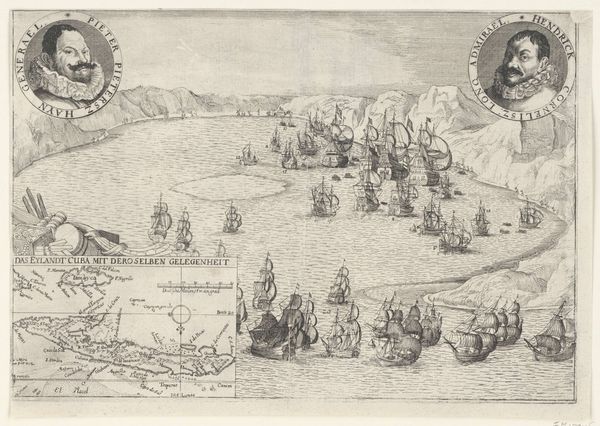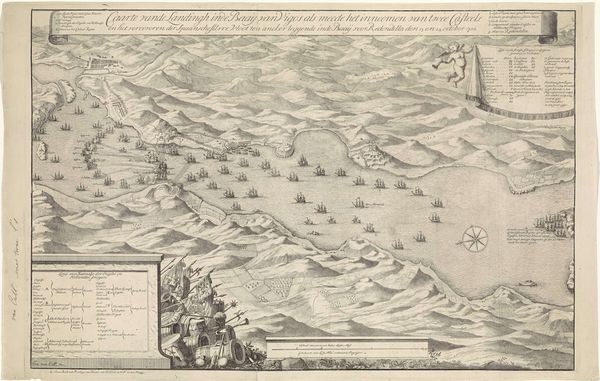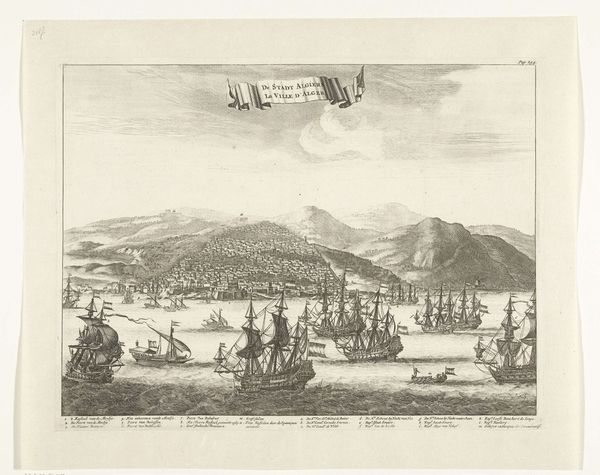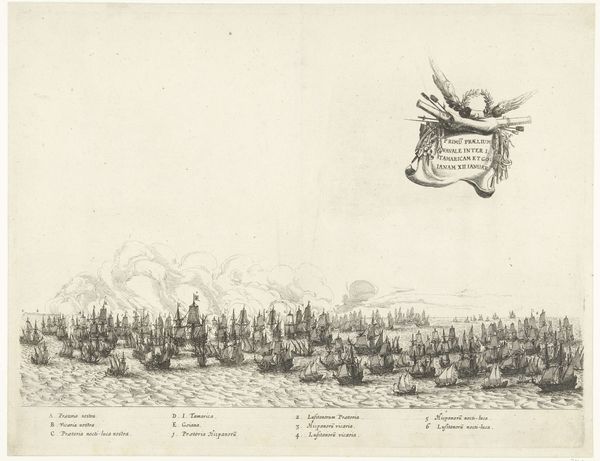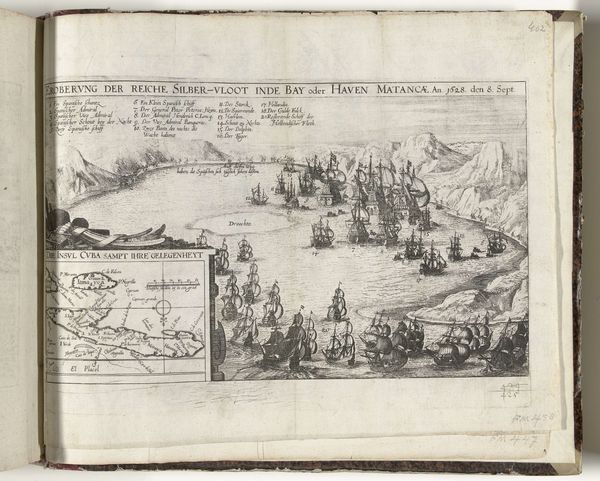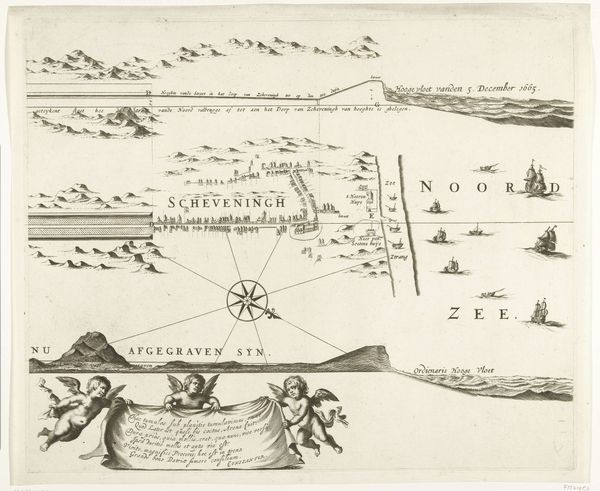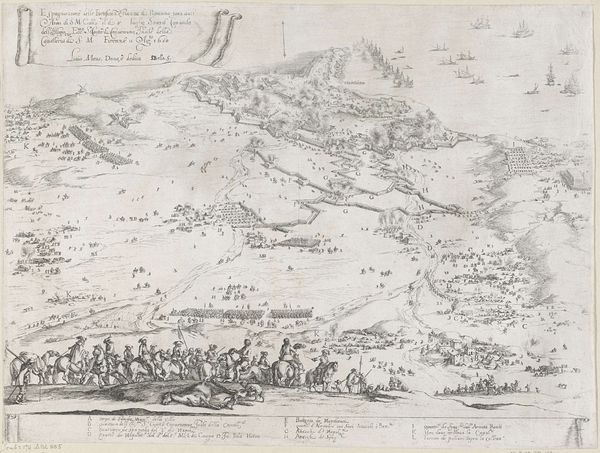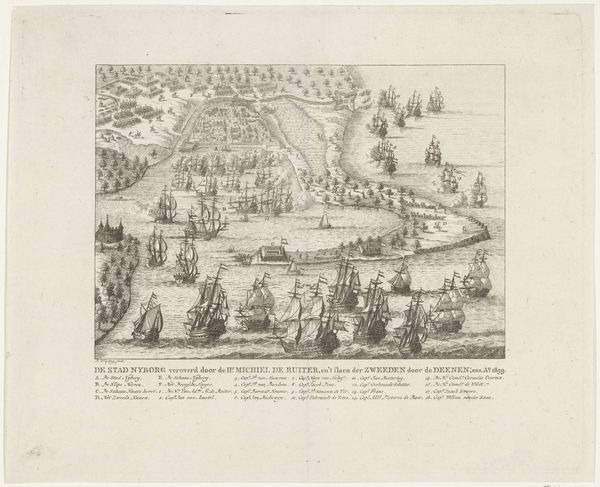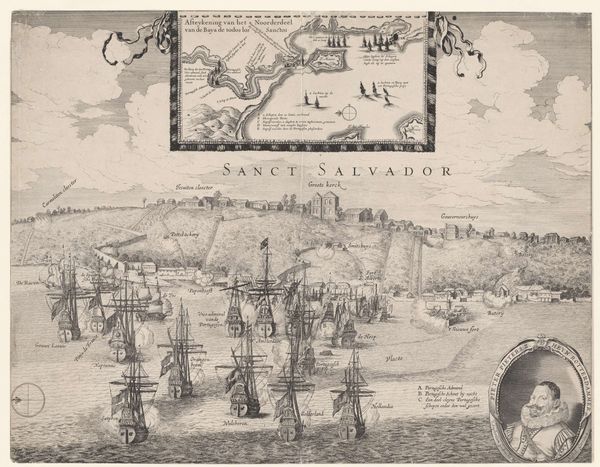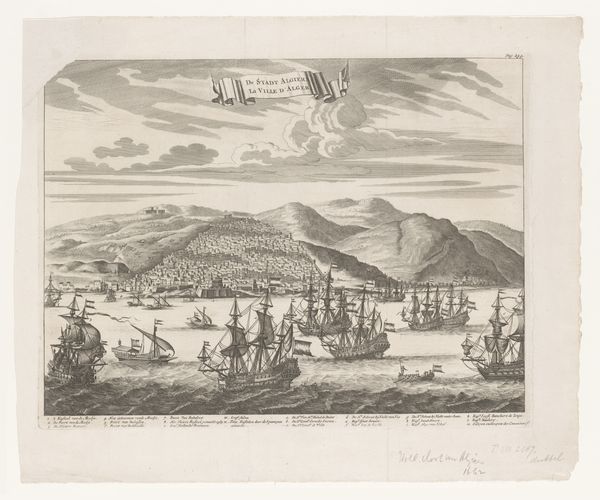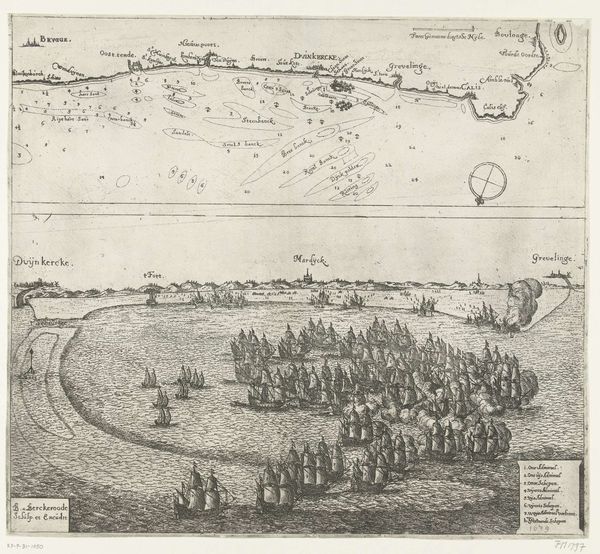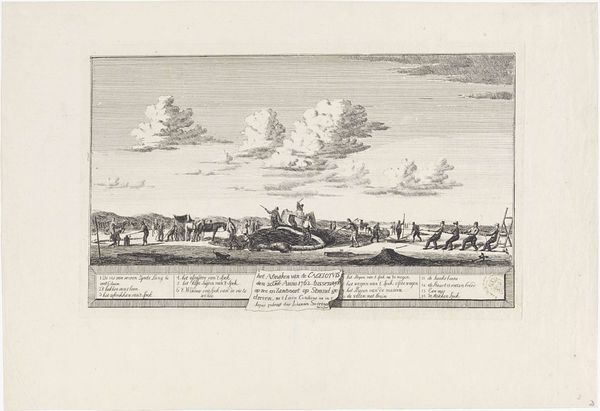
Vierde gevecht met de Portugese vloot bij de Rio Grande, 1640 1645 - 1647
0:00
0:00
salomonsavery
Rijksmuseum
#
light pencil work
#
quirky sketch
#
pencil sketch
#
old engraving style
#
personal sketchbook
#
sketchwork
#
pen-ink sketch
#
sketchbook drawing
#
fantasy sketch
#
initial sketch
Dimensions: height 389 mm, width 512 mm
Copyright: Rijks Museum: Open Domain
Editor: So, this is "Vierde gevecht met de Portugese vloot bij de Rio Grande, 1640" by Salomon Savery, created between 1645 and 1647. It's currently at the Rijksmuseum. Looking at this piece, made with what looks like pen and ink, I am immediately struck by the almost obsessive detail given to each individual ship in the fleet. It gives the impression of a vast and almost industrialized war machine at sea. How do you interpret this work, from your perspective? Curator: From a materialist viewpoint, it's fascinating to consider this sketch not just as a representation of a naval battle, but as a material artifact shaped by the socio-economic conditions of 17th-century Dutch colonialism. Think about the materials: paper, ink. These were valuable commodities, produced through specific labor practices and trade networks. Savery using them to depict this battle underscores the inherent connection between artistic creation and the material realities of war and commerce. Editor: That's a very interesting take. How would the materials available at the time dictate what art was like? Curator: The act of sketching, rapidly capturing a moment or planning a larger work, speaks to the demands and pace of production at the time. What labor went into making these ships, sailing them, engaging in trade and war, only to be captured by an artist working in ink, that was made by someone else? This image becomes more than just a depiction; it is an encapsulation of global resource extraction and human effort. And what about the consumption of such images? Editor: True! I didn't even think about who was consuming this, what it represented for the person looking at it. I'm wondering, where would the social context would be located *in* the sketch? Curator: The image’s emphasis on precision in portraying the ships themselves implies a certain level of understanding of maritime technology, doesn't it? It speaks to the values that 17th century Dutch society upheld; naval dominance, technological superiority, and material gain. Editor: This perspective completely shifts my understanding, because I was so fixed in my aesthetic evaluation and in what I know about "art history" versus looking at it through a lense of socio-economic context and access to materials. Thank you! Curator: Likewise. Focusing on the materials and process involved reveals dimensions we might otherwise overlook, enriching our experience of the work.
Comments
No comments
Be the first to comment and join the conversation on the ultimate creative platform.
